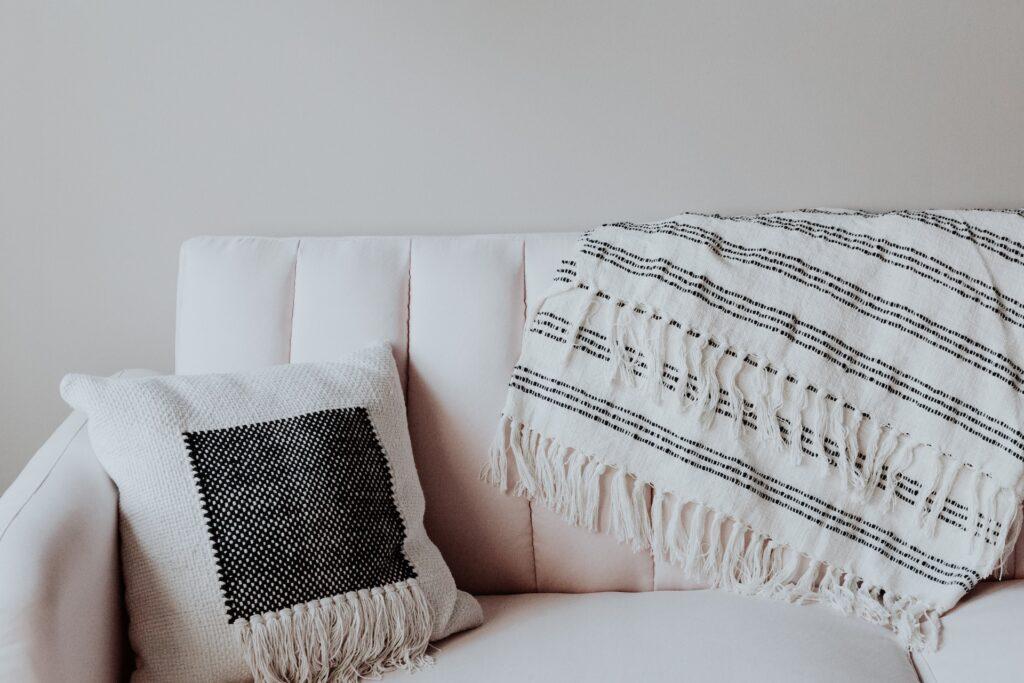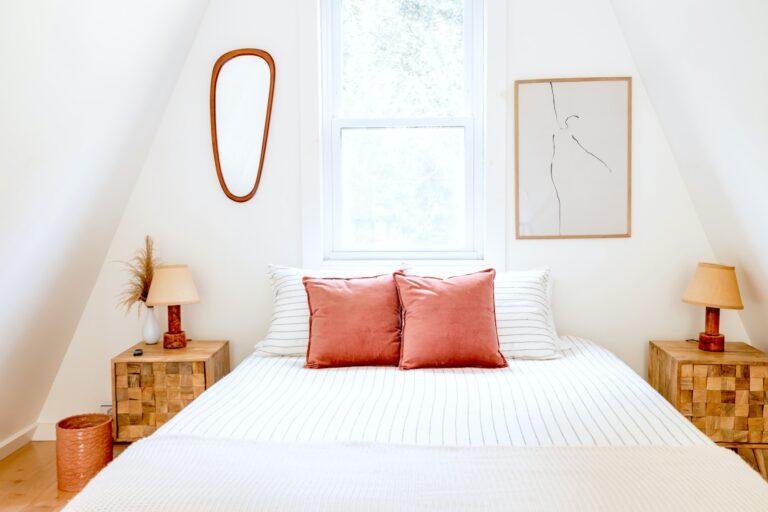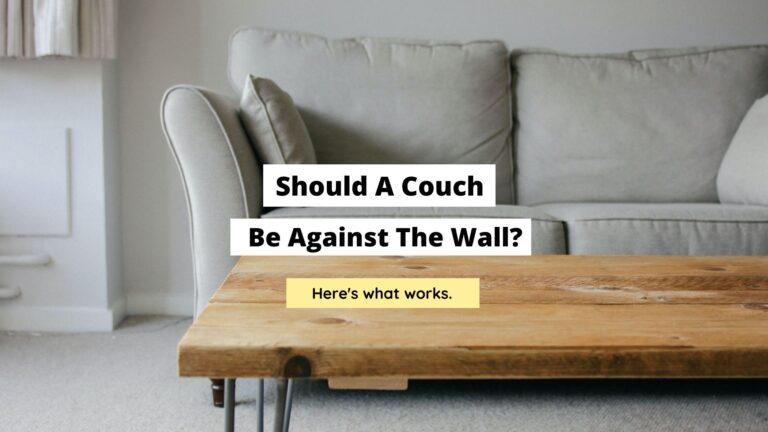What Are The Disadvantages Of A White Couch? (5 Cons!)

Before investing your money, it is crucial that you find a comprehensive answer to the following question – What are the disadvantages of a white couch? Thankfully, I have some personal experience with owning a white couch, so I can give you a full account of the problems with it.
The main disadvantages of a white couch are that they are prone to discoloration, expensive to clean and maintain, dirt, damage, and stains are more visible on them, they don’t add much detail to the room, and they can make a room appear cold and clinical.
Couches are usually purchased for the living room or entertainment room. This means that it becomes one of the primary locations for entertaining guests or hanging out with the family after a long day.
If this is the case for you, then the disadvantages of a white couch are unavoidable, and you need to read on to avoid losing a ton of money.
Table of Contents
The 5 Problems With Owning A White Couch

1. They are prone to discoloration.
Irrespective of what type of material is used on the couch, white tends to be a color that fades or discolors.
Either through excessive sun exposure or wear and tear, the tone and shade of the couch will subtly change over time. The subtle change will accumulate until it’s noticeable to most people.
I like to think of the color white as a neutral and versatile sponge. It soaks up whatever color is around it, especially when the saturation levels of the other color are high.
There have been many cases of the dye used on jeans causing discoloration on white couches. Similarly, anything that has a powder-like structure has the ability to cause permanent discoloration.
This is especially true in the case of couches that are bright white.
If you lean towards the softer and warmer shades of white, discoloration is far less noticeable than on ice white couches.
Here are a few options to consider:
- White smoke.
- Baby powder.
- Ivory.
- Frost white.
- Eggshell white.
- Blanc de blanc.
- Daisy white.
- Rice white.
- White Chiffon.
2. They are expensive to clean and maintain.
Given that white couches are prone to discoloration, a great deal of care has to be taken in selecting the right type of products to clean them.
Anything with a particular coloring or dye that isn’t suitable for the material of your couch could result in damage.
This often leaves home owners with no option other than to invest in expensive cleaning products or employ the services of a professional cleaning company.
In a home with kids who are prone to dropping and spilling things, it’s a nightmare to get stains removed from white couches!
3. Dirt, damage, and stains are more visible on white couches.
Due to the contrast between white and any other color, dirt, damage, and stains are going to stand out like eye sores.
There’s no way to hide it unless you invest in cushions, throws, or pillows.
Think about this for a second.
How often do kids run around the house barefoot and then jump onto the couch to relax?
Most of the time!
It’s not like you have the luxury of making them wash their feet before sitting on the couch.
Most of the time, feet are magnets for dirt and dust. It’s practically impossible to keep black stains, sand, and dust off white couches because of this.
You’re never going to have this problem on a black couch.
If you do, it’s once in a blue moon.
4. They don’t add much detail to the room.
Let’s be honest, white is pretty neutral.
The reason it’s celebrated and cherished in the home decor space is because it frees you up to add a splash of color through other accessories and fittings.
In a room that is plastered with bold colors and loud accents, a white couch would be a welcome sight. Its soft and gentle tones can be considered a safe space within a busy room.
But how many of us actually want a living room that is decorated so colorfully?
The average homeowner opts for soft colors and gentle tones to create a relaxing, ambient feeling in their living room.
In a way, these rooms are already underwhelming.
Adding a white couch isn’t going to uplift or deepen the mood of the room by much.
For something that is so prominent in a room, I think it’s a wasted opportunity to select a white couch that just blends into the background.
5. They can make a room appear cold and clinical.
One of the things I cannot tolerate is a home that appears like a hospital. Cold and devoid of warmth, everything is decorated with a bland and boring white or cream tone.
There’s nothing inviting about this.
One could make the argument that it offers an extreme form of minimalism to their home, but I don’t think that the purpose of minimalism is to eradicate warmth, vibrancy, and personality.
If nothing about your room offers depth of color and warmth, there’s a strong possibility that it will become one of the most forgettable spaces in your home.
In a space that is often celebrated for being the hub of family bonding time and gentle moments of comfort after a long day, you may want to avoid a white couch in a white room.
Final Thoughts
Despite the many disadvantages of a white couch, I actually believe that there is a time and place for white couches.
Under the right circumstances, a white couch can be wonderful in a home.
If you don’t have children or many visitors, that would minimize the risk of discoloration, stains, and damage.
It would also require slightly less maintenance or cleaning.
And if your living room has enough warmth, color, and personality, a white couch could be the perfect neutral addition to balance the room out.
That brings us to the end of this article on what are the disadvantages of a white couch. I hope that it provided you with a good idea of what to consider before investing your money in a white couch. If you would like to read more articles like this, be sure to check out some of the links below.
Related posts:
What color couch goes with gray walls?





